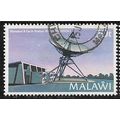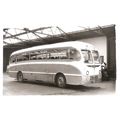Shanghai, China - Lu Xun Park, (Hongkou (Hongkew) Park - postcard c.1980s
- Condition : Used
- Dispatch : 2 Days
- Brand : None
- ID# : 215286893
- Quantity : 1 item
- Views : 179
- Location : United Kingdom

- Seller : justthebook (+1703)
- Barcode : None
- Start : Mon 16 Jan 2023 08:52:33 (EDT)
- Close : Run Until Sold
- Remain : Run Until Sold
Checks/Cheques
 for 1 item(s) edit
for 1 item(s) edit
Shipping Calculator
More Listings from This Seller view all
Seller's Description
- Postcard
- Picture / Image: The Tomb of Lu Xun, a great man of letters of China on Hongkou Park [now Lu Xun Park] [Shanghai, China]
- Publisher: China National Publications
- Postally used: no
- Stamp: n/a
- Postmark(s): n/a
- Sent to: n/a
- Notes / condition:
Please ask if you need any other information and I will do the best I can to answer.
Image may be low res for illustrative purposes - if you need a higher definition image then please contact me and I may be able to send one. No cards have been trimmed (unless stated).
------------------------------------------------
Postage & Packing:
Postage and packing charge should be showing for your location (contact if not sure).
No additional charges for more than one postcard. You can buy as many postcards from me as you like and you will just pay the fee above once. Please wait for combined invoice. (If buying postcards with other things such as books, please contact or wait for invoice before paying).
Payment Methods:
UK and all other locations - PayPal or other methods listed above.
NOTE: All postcards are sent in brand new stiffened envelopes which I have bought for the task. These are specially made to protect postcards and you may be able to re-use them.
I will give a full refund if you are not fully satisfied with the postcard.
----------------------------------------------
Text from the free encyclopedia WIKIPEDIA may appear below to give a little background information (internal links may not work) :
*************
Lu Xun Park, formerly Hongkou (Hongkew) Park, is a municipal park in Hongkou District of Shanghai, China. It is located on 146 East Jiangwan Road, right behind Hongkou Football Stadium. It is bounded by Guangzhong Road to the north, Ouyang Road to the northeast, Tian'ai Road to the southeast, Tian'ai Branch Road to the south, and East Jiangwan Road to the west. The park is named after the Chinese writer Lu Xun, who lived nearby in the last years of his life, and is the location of the tomb of Lu Xun and the Lu Xun Museum. In 1932, Korean nationalist Yun Bong-gil detonated a bomb at the park, killing or injuring several high-ranking figures of the Imperial Japanese military during a celebration of Emperor Hirohito's birthday.
Lu Xun Park is just north of Duolun Road, a historic street that is now a car-free zone. It is also located near Lu Xun's former residence, a three-story Japanese-style home where the author lived from 1933 until his death in 1936.[1]
Lu Xun lived in Hongkou near the park in the last years of his life, having moved from Guangzhou to Shanghai's International Settlement to find refuge after the Kuomintang government initiated a purge of leftist intellectuals and communist party members in several Chinese cities under their control in 1927.[22] He co-founded the League of Left-Wing Writers in 1930 at the Chinese Arts University on nearby Duolun Road.[23]
After his death in 1936, Lu Xun was originally buried in the International Cemetery (Wanguo Cemetery).[4] By this point, his reputation as a popular intellectual was already well-established. His coffin was draped in a white flag with the words "The Soul of the Nation" written on it. Lu Xun remained a potent political symbol of the left after his death, particularly after the establishment of the People's Republic of China under the Communist Party in 1949. The party canonized him as a heroic figure, praising his works and quoting him selectively for its own purposes.[24]
The Lu Xun Memorial Hall (or Museum) was constructed inside Hongkou Park in 1951, and in 1956, Lu Xun's remains were reinterred in the park to mark the 20th anniversary of his death.[1] The new tomb's inscription ("鲁迅先生之墓", "The Tomb of Mr. Lu Xun") was written in the calligraphy of Mao Zedong. The Beijing Lu Xun Museum was also established that year, at the site of Lu Xun's former home in Beijing. Lu Xun's tomb is one of the historical and cultural sites protected at the national level in Shanghai. The park was renamed Lu Xun Park in 1988.[2]
Listing Information
| Listing Type | Gallery Listing |
| Listing ID# | 215286893 |
| Start Time | Mon 16 Jan 2023 08:52:33 (EDT) |
| Close Time | Run Until Sold |
| Starting Bid | Fixed Price (no bidding) |
| Item Condition | Used |
| Bids | 0 |
| Views | 179 |
| Dispatch Time | 2 Days |
| Quantity | 1 |
| Location | United Kingdom |
| Auto Extend | No |




















